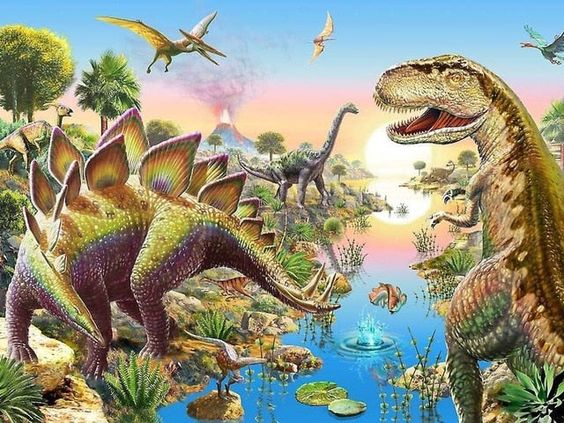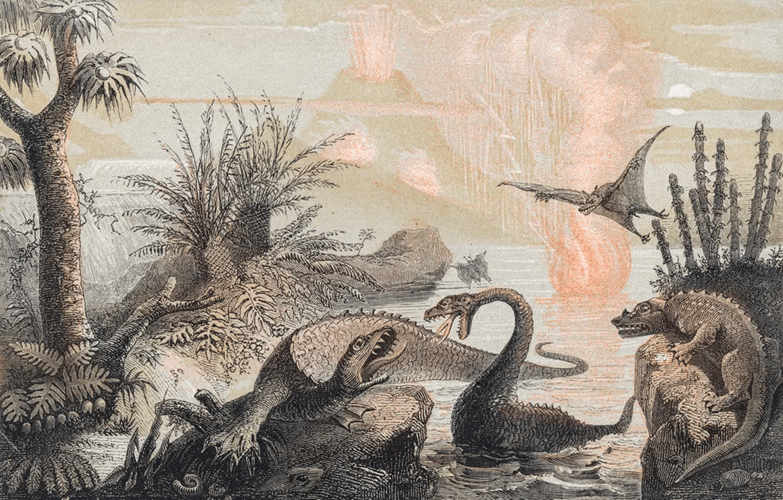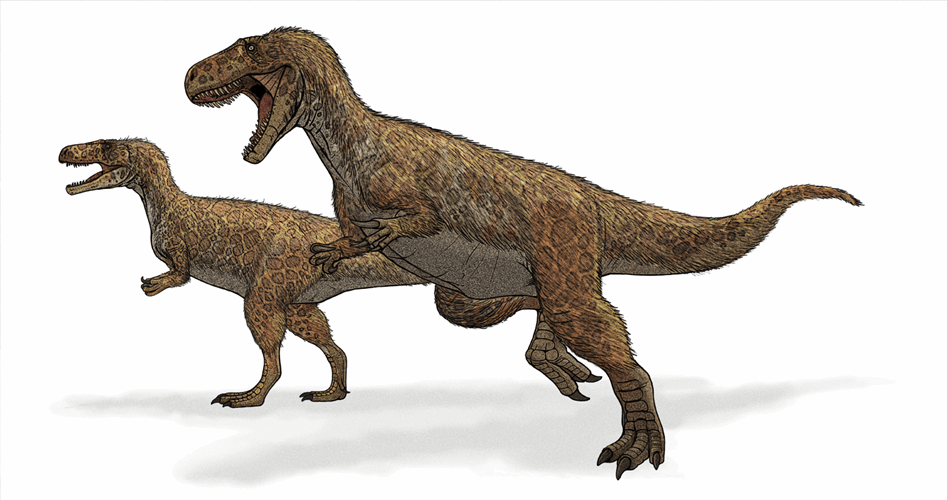We have only discovered 2% of dinosaurs

Imagine the most fanciful prehistoric creature that you can, the sort you might have drawn when you were five years old. It may well have existed. We may well never know. We have barely scraped the surface in terms of dinosaur discovery. In fact, according to an estimate by British palaeontologist Susannah Maidment, we have probably only discovered between one and two percent of dinosaurs.
Although a new dinosaur species is discovered about every two weeks, we’ve only discovered about 700 species of dinosaur (it’s worth considering that there are currently 2 million species of animals on earth). 59% of the dinosaur species are from a single specimen with the remains often incomplete.
Only a fraction of dinosaurs were fossilised
The problem is that most dinosaurs died and were eaten, or rotted away. Normally dinosaurs that died were scavenged, and the bones were eaten by bacteria or disintegrated, leaving no evidence that the dinosaur ever existed. We only have bone evidence because a few dinosaurs happened to step into quicksand, bogs or fell into lakes and sank into the sediment at the bottom where they were preserved for millions of years.
Environment is super important to a dinosaur’s chances of getting fossilized. The idea that we will ever know all the dinosaurs that ever lived is completely crazy. Only a fraction of the animals that ever lived would have been fossilized.
Susannah Maidment, British palaeontologist, Natural History Museum
Fossils are normally found in sedimentary bases like river basins and flood plains. But what about animals that lived up in the mountains? Mountains aren’t preserved in fossil records because they eroded away. We will probably never know about animals that lived up in the mountains.

There are creatures we will never know about because they were never preserved.
Susannah Maidment, British palaeontologist, Natural History Museum
Most countries haven’t been investigated for fossils
Most countries haven’t been investigated for fossils because palaeontologists have focused their searches nearer to home, William Buckland for instance, who identified the first dinosaur fossils in 1824, discovered them in Oxfordshire, near where he worked at Oxford University. Of the 11,000 dinosaur fossils that have been discovered since then, two thirds have been found in North America and Europe, because that’s where the palaeontologists came from, and it’s easier to do fieldwork locally.

We have only discovered a tiny fraction of dinosaurs that actually existed. I reckon that everything we know about dinosaurs so far is based on our understanding of about one or two percent…
Susannah Maidment, British palaeontologist at the Natural History Museum, in an interview for BBC Life Scientific
We’ve only found 29% of ‘discoverable’ dinosaurs
In 2006, palaeontologists Steve Wang and Peter Dodson used statistics and developed an abundance-based coverage estimator to work out the percentage of discoverable dinosaurs. It was based on records of fossil abundance and rare known genera.
Using a logistic model they calculated that, of all the discoverable dinosaur genera, we probably know 29% and estimated that we will discover up to 90% in the next 100-140 years (so there’s something to look forward to!) Note this figure differs from Maidment’s because this study only calculates discoverable species and admits that there are many species that will never be discovered because they left no remains.
Bonus Fact: All birds are technically dinosaurs
There are 10,000 species of dinosaurs alive today, they’re known as birds and have a common ancestor with non-avian dinosaurs. Both lizard-hipped dinosaurs like the T-Rex and your common House Sparrow are theropods.

Sources
Susannah Maidment on stegosaurs – BBC Life Scientific (31.19)
Types of Dinosaurs – American Museum of Natural History
Estimating the diversity of dinosaurs – Steve C. Wang*† and Peter Dodson‡






